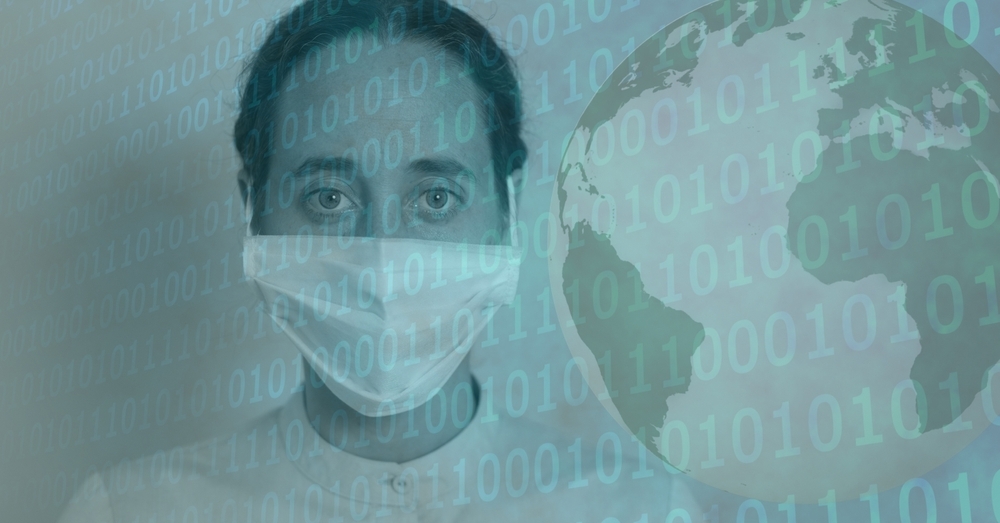In World War II, navies disguised warships by painting them in a pattern called “dazzle,” which confused radar systems. Although it didn’t really look anything like the camouflage soldiers wore, it essentially camouflaged the ships.
In 2020, something similar happened to facial recognition. It wasn’t on purpose, but facial recognition systems suddenly started having trouble recognizing people. That’s because so many of them were wearing masks in an effort to fight COVID-19.
Now, however, researchers are finding ways for facial recognition software to work even when people are wearing masks, providing the opportunity to take advantage of this identification technology even during a pandemic.
How facial recognition works
Facial recognition provides a more reliable and secure way of identifying people than an identification card, which could be lost, stolen, or copied, because a face can’t be easily changed or duplicated, and, barring accidents, you can’t lose it.
In some cases, facial recognition software goes beyond matching one photograph to another using “facial geometry,” or measuring aspects of a person’s face, such as how far apart their eyes are. More advanced technology can also extrapolate how a person would look with a different facial expression, at a different angle, or wearing a hat or a mask.
COVID-19 isn’t the only reason people could be wearing masks, pointed out the National Institute of Science and Technology (NIST) in its report, “Ongoing Face Recognition Vendor Test (FRVT) Part 6B: Face recognition accuracy with face masks using post-COVID-19 algorithms.” People might be wearing masks due to any pandemic, allergies, air pollution or simply by virtue of the fact that they’re in a hospital or other medical setting, the report noted.
How facial recognition is used
Organizations that take advantage of facial recognition include border crossings, retailers, and even Disney World, which tested a system using a unique number generated by a person’s face as an identification mark to reduce the amount of time spent waiting in line. (Disney World ended the test in May 2021.)
But facial recognition can be much more widespread than that. Smartphones have the option to use facial recognition rather than a code, pattern, or fingerprint to identify the user. A 2020 study found that nearly 30% of smartphone owners used the facial recognition feature.
That was the problem facial recognition had with COVID-19: People who had set up their smartphones to recognize them via facial recognition suddenly found they couldn’t get into their phones because they were wearing masks. And taking off their masks to use their phones put them at risk of catching or spreading the disease.
Consequently, researchers started looking at the issue.
“The National Institute of Standards and Technology tested 89 commercial facial-recognition algorithms — and found a 5-50% error rate in matching faces with digitally applied masks to photos of the same person,” reported the BBC.
But researchers kept working on the problem and began to solve it. “In January 2021, a US Department of Homeland Security ‘controlled-scenario test’ found one with a 96% success rate — although the results ‘varied greatly between systems,’” the BBC reported.
When people wear masks, some facial recognition systems simply focus instead on the part of the face that isn’t covered by the mask, and uses that to identify the person, the BBC explained.
In fact, once the mask issue was dealt with, some organizations were even more interested in using facial recognition, because it avoided interaction between people to hand over identification cards or other items. Facial recognition systems were also used in situations like the Olympics to determine mask compliance.
The downsides of facial recognition
That said, facial recognition isn’t a panacea. In some cities and countries, there are limitations on the use of facial recognition software.
- Some types of facial recognition software are hampered in their ability to accurately recognize and identify women and people of color, because the datasets they’re trained on are primarily white men. Datasets of people with criminal records, on the other hand, are disproportionately made up of people of color. That combination makes it easier for someone to be misidentified perhaps as a criminal. Moreover, some facial recognition products didn’t even recognize the faces of some people of color as being faces at all. Now that the mask issue has been resolved post COVID -19 most top tier vendors are focusing on the problem.
- Some people are concerned about law enforcement’s use of facial recognition software, such as tracking people in legal protests. But law enforcement organizations such as the New York Police Department note, “A facial recognition match does not establish probable cause to arrest or obtain a search warrant, but serves as a lead for additional investigative steps. The detective assigned to the case must establish, with other corroborating evidence, that the suspect identified by the photo match is the perpetrator in the alleged crime.”
- Some people just find it creepy. Part of the reason Disney World ended the test, for example, is that some patrons found it to be too much like Big Brother, reported the Disney Tourist Blog which noted, ironically, that patrons were complaining about it on social media sites that also tracked them.
These days, people have gotten over a number of technologies that they initially found intimidating, ranging from photographs to movies to fingerprints, when the benefits of the technology overcame their concerns. And facial recognition — with the proper civil liberties protections and refined to address bias — is likely no different.
Interested in learning how optical character recognition can help your business protect itself by using physical identification documents? For a free trial of our API or software, please email us at [email protected].




